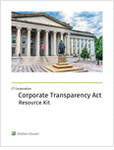At first glance, it seems like an easy call for a regulator: Adopt technology that allows cars to “talk” to each other, avert more than 500,000 crashes and save 1,000 lives each year. But a host of difficult legal issues threaten to stall a tentative proposal by the National Highway Traffic Safety Administration (NHTSA) that would require new cars and trucks to come equipped with such vehicle-to-vehicle communication systems by 2019. Among them, concerns about liability, privacy, cybersecurity and government overreach.
“We’re talking about a titanic shift in the fight for auto safety … but it’s complicated,” says Venable partner David Strickland, who led the NHTSA from 2010 until he joined the firm last year.
This content has been archived. It is available through our partners, LexisNexis® and Bloomberg Law.
To view this content, please continue to their sites.
Not a Lexis Subscriber?
Subscribe Now
Not a Bloomberg Law Subscriber?
Subscribe Now
LexisNexis® and Bloomberg Law are third party online distributors of the broad collection of current and archived versions of ALM's legal news publications. LexisNexis® and Bloomberg Law customers are able to access and use ALM's content, including content from the National Law Journal, The American Lawyer, Legaltech News, The New York Law Journal, and Corporate Counsel, as well as other sources of legal information.
For questions call 1-877-256-2472 or contact us at [email protected]




